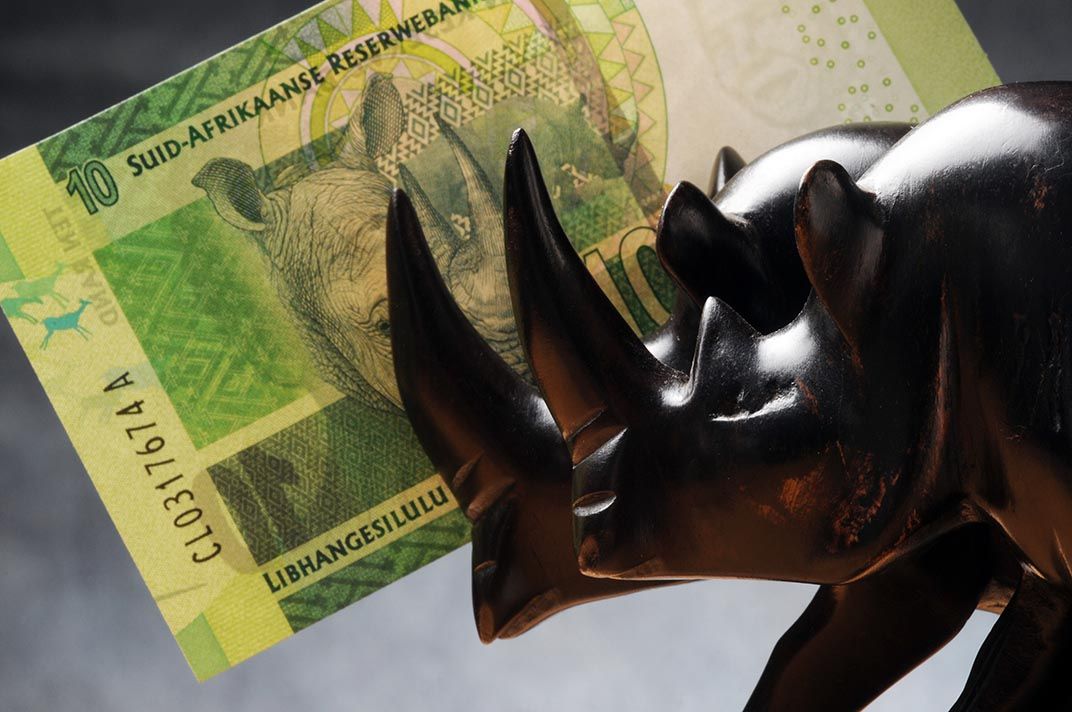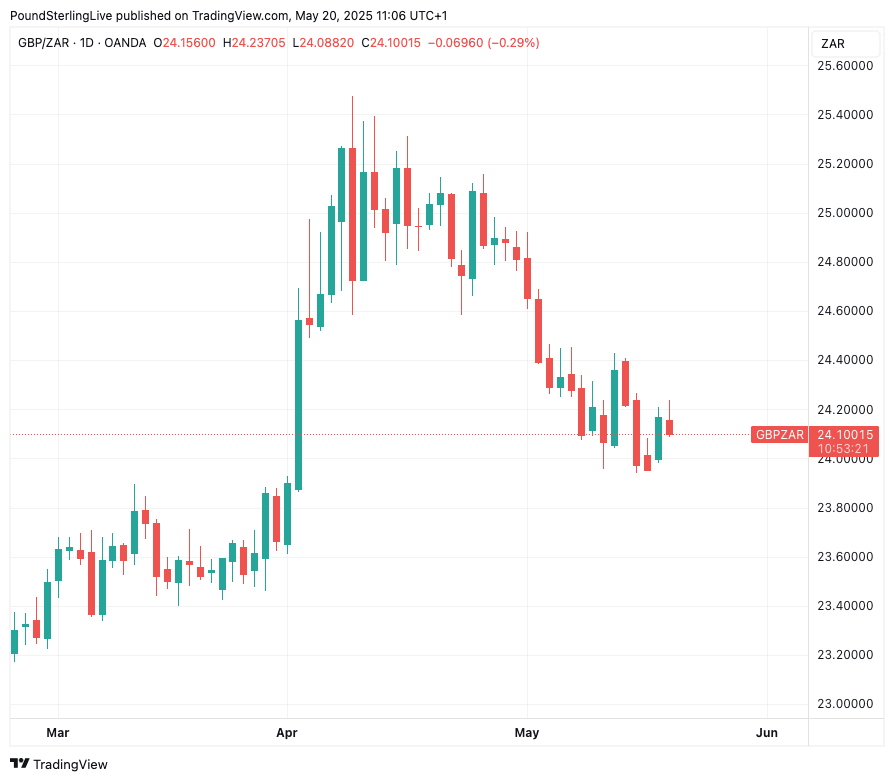South African Rand Charges Ahead
- Written by: Gary Howes

Image © Adobe Images
The South African rand extends an impressive comeback, buoyed by a broader rally in emerging market (EM) currencies and investor appetite for high-yielding assets.
"One new trend over the last week is that most emerging currencies around the world are rallying against the dollar," said Chris Turner, Global Head of Markets at ING. The rand, with an implied yield of around 7%, is among those benefiting from the shift in sentiment.
Investor focus has turned toward currencies offering attractive returns, such as the Rand, Brazil’s real and Mexico’s peso, amid a backdrop of stabilising global volatility and expectations of U.S. interest rate cuts.
"If the Federal Reserve does ever start cutting rates, and more importantly, volatility settles some more, we will start to hear more about dollar-funded carry trades," Turner said, suggesting this could become a key market theme over the summer.
The dollar index (DXY) has eased toward 100, with ING maintaining a "slight bias to the 99.20 area this week," further supporting EM currencies.
Owing to an Emerging Market comeback, the Pound to Rand exchange rate has fallen nearly 3.0% in May alone, adding to April's 2.64% retreat from the all-time peak of 25.47.
Above: GBP/ZAR at daily intervals.
Still, ING cautioned that high-yielders like the rand remain high-risk and sensitive to shifts in global sentiment. "The South African rand (7%) sits in the same category as the high return, high risk Turkish lira (43%)," Turner noted.
Implied yield reflects the difference in interest rates between two currencies (e.g. USD vs. ZAR) as indicated by the forward exchange rate.
It shows the cost or benefit of holding one currency over another via currency forwards or carry trades.
For example, if the ZAR offers higher interest rates than the USD, then buying ZAR and selling USD through a forward contract can generate a positive implied yield — in this case, about 7% annually.





